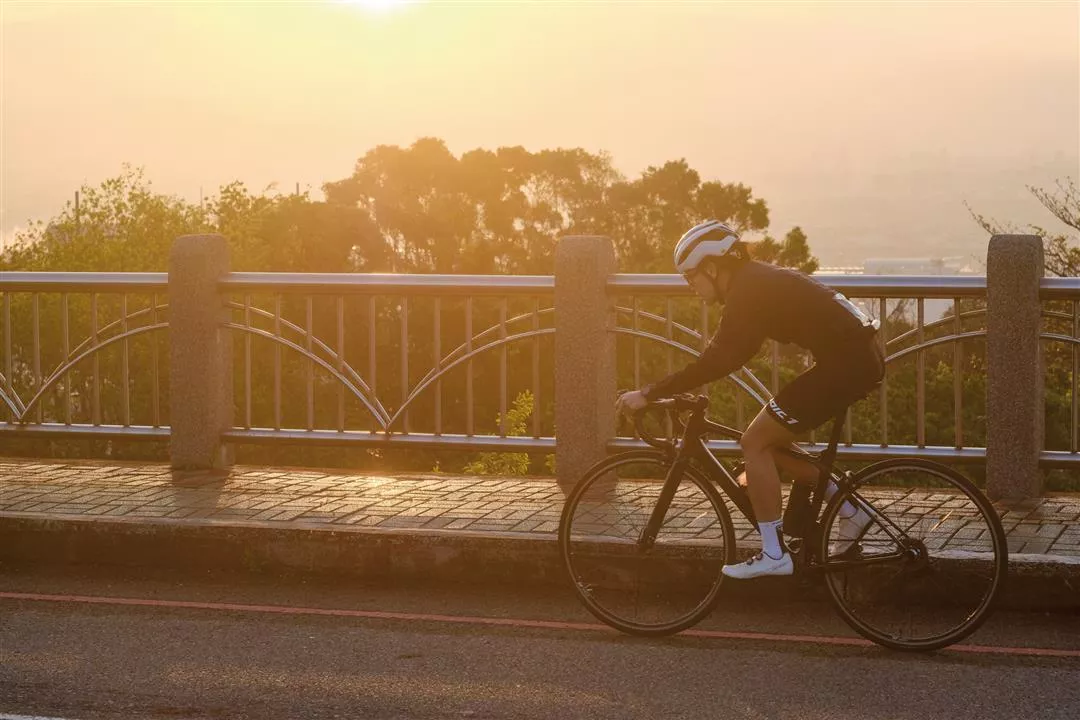Exploring bicycle culture
We’ve heard that employees at the Central Taiwan Science Park take advantage of the cool early morning temperatures to ride a few laps on the famously challenging “Squirrel Hill” bike trail near the Science Park, then shower at home before heading off to work. They say it energizes them. Morning rides have gradually become part of Taichung’s new bicycle culture, not only as exercise or a hobby but also as a social activity.
At six o’clock next morning, while warming up at the starting point of the Squirrel Hill trail, we meet Wang Yiwen. Fully clad in cycling apparel, she leads us on the ride. The trail has a smooth surface, with moderate gradients and bends. The workout leaves us excited and refreshed.
Following the morning ride, we visit the Cycling Culture Museum, located next to bicycle maker Giant Group’s towering new headquarters. Before coming to Taichung, we called on architect Joshua Jih Pan, the museum’s designer. “To give the museum the largest possible exhibition space we used a thin-shell structure, and we designed the roof in the image of Giant’s corporate logo. English sculptor Henry Moore’s Two Piece Reclining Figure No. 5 at Denmark’s Louisiana Museum of Modern Art inspired the contrasting high-and-low design, and the surrounding bike-friendly environs come from cycling culture.” Pan adds: “We chose a bright silver finish for the exterior so that the flowing lines of the structure can reflect the sunlight at different times of day and convey the streamlined feeling of a bicycle.”
“Before retiring, what Giant founder King Liu wanted most was not to promote Giant products but to record the cultural evolution of the world’s bicycles,” operations director Howard Wang says of the museum’s origins.
There’s lots to see in the Cycling Culture Museum, from bicycle evolution, functional changes, process technology, mechanical principles, and materials development to bicycle art. The rich and varied displays, covering nearly every aspect of cycling, reshape our cultural perception of bicycles.
“Driving is too fast; walking is too slow. Bicycle speed is in the middle. Cars rely on engines and walking depends on two legs. With a bicycle, the body and the brain work together,” Wang says. “When a majority of people think alike and repeat the same behavior patterns, cultures naturally coalesce. The same is true when it comes to cycling.”

Early morning bike rides are a great way to get fit, raise concentration and make friends.

The flowing lines of the Giant Group’s new headquarters evoke a streamlined feeling.

A trip to the Cycling Culture Museum is an exploration of bicycle history and technology.